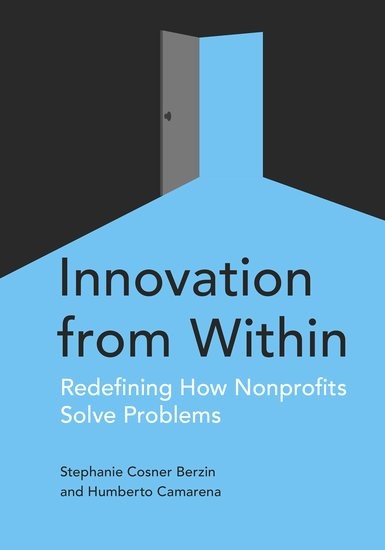
In today’s culture of fast-paced technological and entrepreneurial innovation, nonprofits have much to gain by looking within their own organizations to find new solutions to social problems, according to a new book by Stephanie Berzin, previously an associate professor and assistant dean of doctoral programs at the School of Social Work. Co-authored with Humberto Camarena, Innovation from Within: Redefining How Nonprofits Solve Problems (Oxford University Press, 2018) offers a practical framework for how leaders in the nonprofit sector can foster innovation and creativity within their organizations.
The book grew out of Berzin’s work as co-director of the Boston College Center for Social Innovation, which collaborates with social service agencies around the world to help them design and implement new solutions to pressing problems and build their long-term capacity to effect change. In the course of their work with hundreds of agency leaders, Berzin and Camarena—the former assistant director of the Center—became aware of a need for what Berzin calls “a paradigm shift in the field.”
“Often, organizations in the social sector look at innovation as something that is difficult, expensive, and beyond their capacity,” she says, “but our research and work has led us to believe that innovation is not only possible for nonprofits today; it’s crucial.” In an ever-changing landscape, she argues, addressing complex social needs demands products and services that are outside the scope of traditional nonprofit practice. “Doing this kind of innovation work as a nonprofit can become a competitive advantage, just as it is for companies in the for-profit sector.”
Innovation means different things for every nonprofit, Berzin says, and every social or organizational problem requires its own unique solution.
“Innovation could mean a new app, a policy change, an art space, a pro-social video game, a new service, or a programmatic change,” she says, noting that these are only some of the changes that have come out of the Center for Social Innovation’s collaborations with social agencies. “There’s a huge range to what nonprofits can do once they open their minds to drawing on their existing resources and expertise.”
A common thread at social agencies that effectively break the mold, Berzin and Camarena argue, is leadership that encourages employees to feel comfortable bringing novel ideas to the table. Their model for building intra-organizational innovation emphasizes the importance of establishing a culture of risk-taking, creativity, and collaboration between people with different areas of expertise.
In their book, the authors stress that the exchange of ideas between the nonprofit sector and other companies and areas of research is a two-way street. Just as social agencies can better serve their communities by incorporating ideas from fields such as business, engineering, and design, the social sector has much valuable expertise to offer to the world of entrepreneurship at large.
“Social agencies have scale,” Berzin says. “They have deep community relationships and long organizational histories, and they understand the social problems they’re working to address on a profound level. There’s so much that they bring to the table.”

